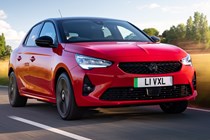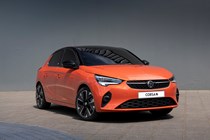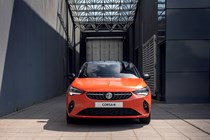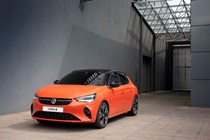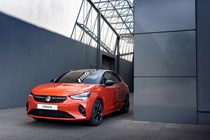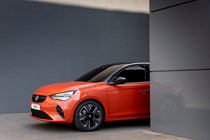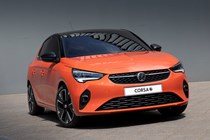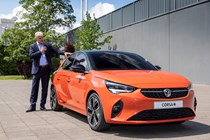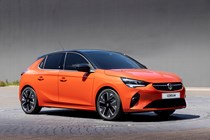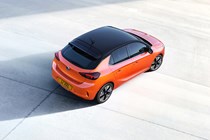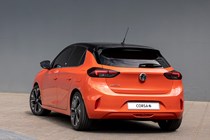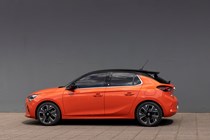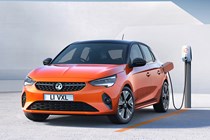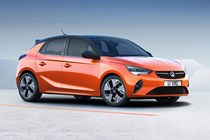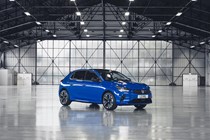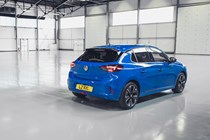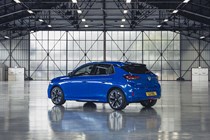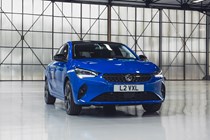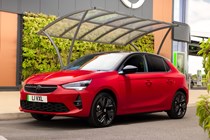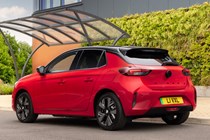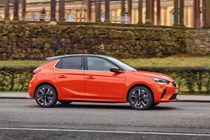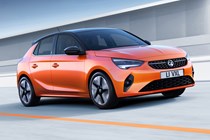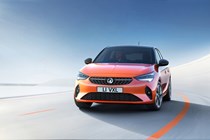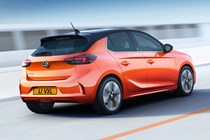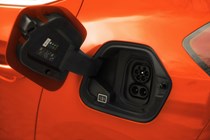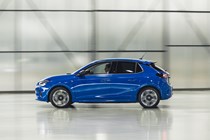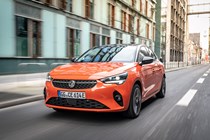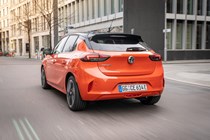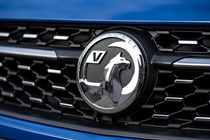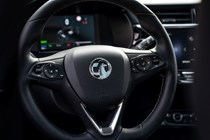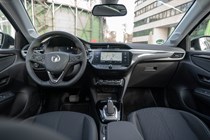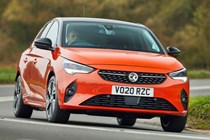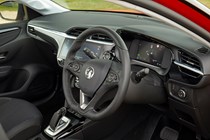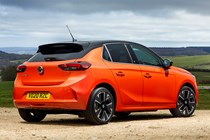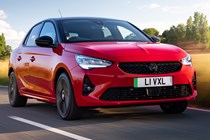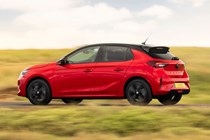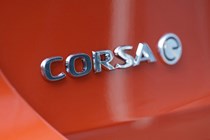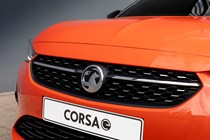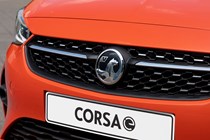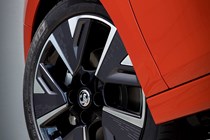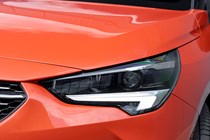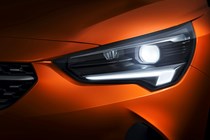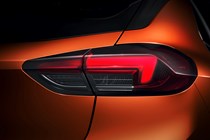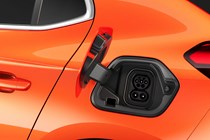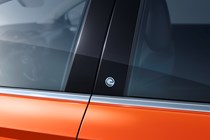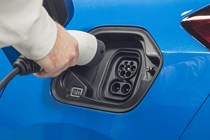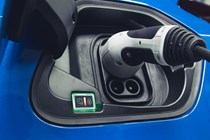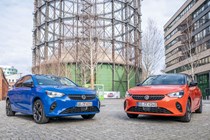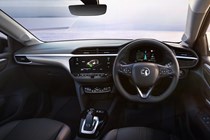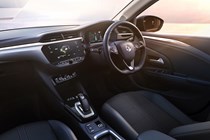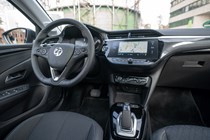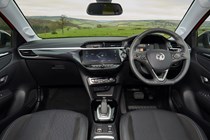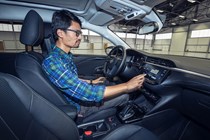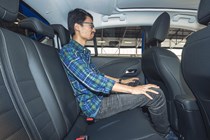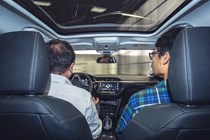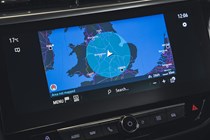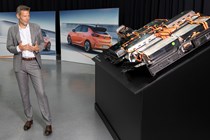
Vauxhall Corsa-e Hatchback (2020-2023) boot space, practicality and safety
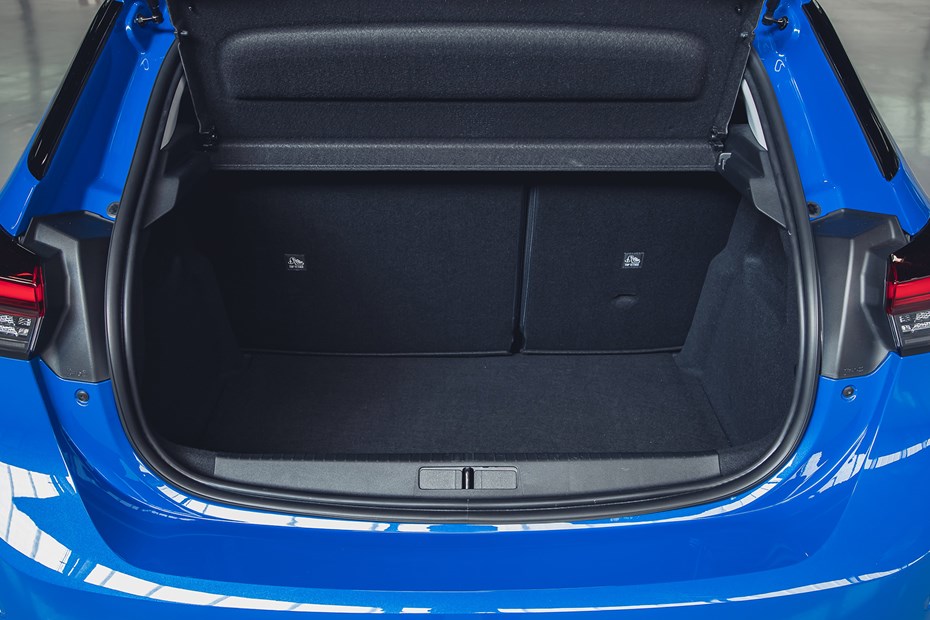
- Nearly identical to regular Corsa
- Plenty of space up front
- Bootspace just okay
How much space is there?
From the front, most people won’t be able to notice that this is the electric version of the Corsa. Only the eagle-eyed will spy the different wheels and subtle badging, so those who don’t wish to shout about their choice of propulsion may like Vauxhall’s approach.
Compared with the regular Corsa, there’s a small reduction in overall cabin space, but there’s really not much in it.
Boot space and storage
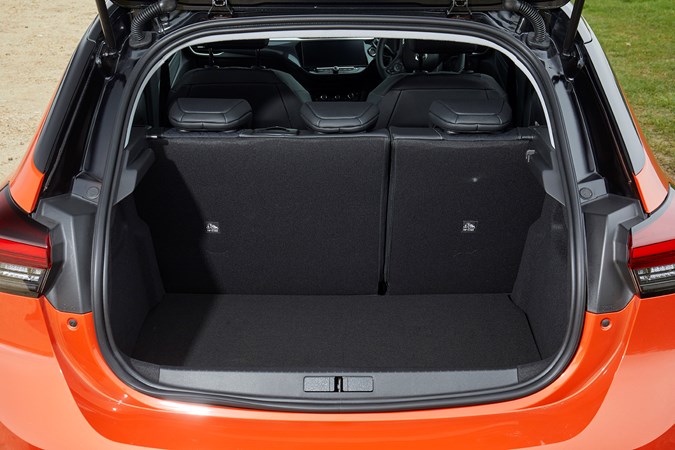
The Corsa Electric is a reasonably spacious car in the back. In the rear, a six-foot passenger can sit behind a six-foot driver. There’s also more kneeroom than a Renault Clio or Renault Zoe. There’s no raised tunnel in the middle either, which is good for legroom for people in the middle seat.
The optional panoramic roof doesn’t eat into headroom thanks to a raised cut-out behind it, just above the passenger’s head. Getting out of the Corsa might be a bit tricky though, due to the height of the sills.
Safety
- Four-star rating
- Plenty of safety kit
- Cutting-edge safety tech
The Vauxhall Corsa received a four-star rating when it was crash tested by Euro NCAP. It scored best in the adult occupant section, but performed worst in the vulnerable road users section.
Supporting the driver is a wealth of camera and radar-based assistance systems including:
- Traffic sign recognition
- Lane keep assist
- Side blind spot alert
- Adaptive cruise control
- Autonomous emergency braking
- Drowsiness detection
- Parking sensors and rear view camera
- Automatic parking assist
Euro NCAP rating
| What is Euro NCAP? ⓘ | |
|---|---|
| Adult Occupant: | 84% |
| Child Occupant: | 86% |
| Vulnerable Road User: | 66% |
| Safety Assist: | 69% |
Equipment and options
- 3x3 point rear seat belts
- ABS
- Alarm
- Body coloured bumpers
- Climate control
- Driver`s airbag
- Electric mirrors
- Front electric windows
- Heated mirrors
- Height adjustable drivers seat
- Isofix child seat anchor points
- Parking sensors
- PAS
- Passenger`s airbag
- Sat Nav
- Service indicator
- Side airbags
- Steering wheel rake adjustment
- Steering wheel reach adjustment
- Telephone
- Traction control
- Cloth seat trim
- Cruise control
- Heated seats
- Metallic Paint
- Rear electric windows
- Remote locking
- Sports seats
- n/a
- Cloth seat trim
- Cruise control
- Heated seats
- Metallic Paint
- Rear electric windows
- Remote locking
- n/a
- Cloth seat trim
- Cruise control
- Heated seats
- Metallic Paint
- Rear electric windows
- n/a
- Cloth seat trim
- Cruise control
- Heated seats
- Rear electric windows
- Remote locking
- n/a
- Cloth seat trim
- Cruise control
- Heated seats
- Metallic Paint
- Rear electric windows
- Remote locking
- n/a
- Cloth seat trim
- Cruise control
- Rear electric windows
- Remote locking
- Sports seats
- n/a
- Cloth seat trim
- Cruise control
- Rear electric windows
- Remote locking
- Sports seats
- n/a
- Alloy wheels
- Cloth seat trim
- Cruise control
- Metallic Paint
- Remote locking
- n/a
- Cloth seat trim
- Cruise control
- Metallic Paint
- Rear electric windows
- Remote locking
- n/a
- Cloth seat trim
- Cruise control
- Rear electric windows
- Remote locking
- n/a
- Cloth seat trim
- Cruise control
- Metallic Paint
- Rear electric windows
- Remote locking
- Sports seats
- n/a
- Cloth seat trim
- Cruise control
- Rear electric windows
- Remote locking
- Sports seats
- n/a
- Heated seats
- Leather seat trim
- Rear electric windows
- Remote locking
- Sports seats
- n/a
Dimensions
| Length | 4060mm |
|---|---|
| Width | 1960mm |
| Height | 1433mm |


